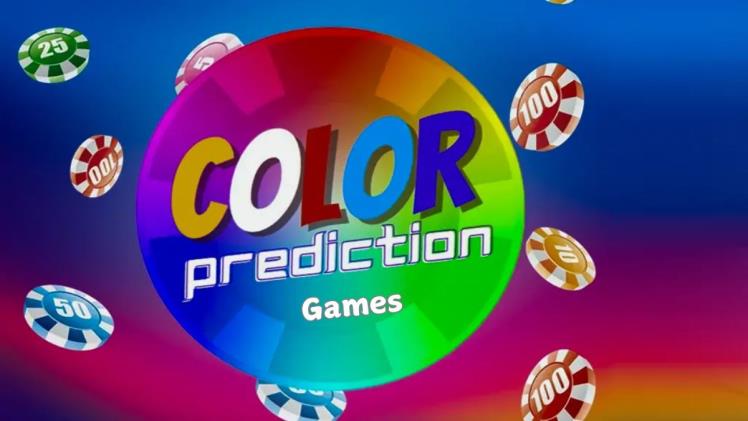What’s Next for Online Color Prediction Games?
Online color prediction games have steadily gained popularity, merging elements of probability, psychology, and entertainment into interactive gaming experiences. As technology evolves, the landscape of these games is set to undergo significant transformations, incorporating advancements in artificial intelligence, blockchain technology, immersive gaming interfaces, and community-driven engagement models. The future of color prediction games will be shaped by innovation, regulation, and the expanding influence of digital gaming ecosystems.
Technological Advancements in Color Prediction Gaming
The integration of artificial intelligence will redefine the mechanics of color prediction games by enhancing fairness, personalization, and predictive modeling. AI-driven algorithms will analyze user behavior to refine probability calculations, ensuring a balanced experience that remains both challenging and engaging. Machine learning models will adapt gameplay based on historical player interactions, creating dynamic and responsive prediction systems that evolve alongside user preferences.
Augmented reality and virtual reality are set to introduce immersive gaming formats where players interact with prediction-based challenges in visually enriched environments. Instead of static interfaces, future color prediction games may allow users to engage with colors in three-dimensional digital spaces, blending real-world interactivity with gaming mechanics. Gesture-based controls and motion-sensitive technology could further enhance engagement, providing new ways to participate in prediction challenges.
The Role of Blockchain and Decentralized Gaming
Blockchain technology is poised to transform online color prediction games by introducing transparency, security, and decentralized reward systems. Smart contracts will govern prediction wagers, ensuring fairness and automated payouts without the need for intermediaries. The decentralization of gaming ecosystems will allow users to verify transactions on blockchain networks, reinforcing trust in gaming outcomes and financial exchanges.
Digital tokenization will enable players to earn and trade virtual assets linked to their gaming performance. These blockchain-based rewards will provide users with ownership over in-game currency, allowing seamless conversions and exchanges across platforms like ok win app. The emergence of decentralized autonomous organizations (DAOs) will facilitate community-driven governance, enabling players to contribute to game development, rules, and reward structures through collective decision-making.
Regulatory Trends and Ethical Considerations
As online gaming expands, regulatory frameworks surrounding color prediction games will evolve to address concerns related to fairness, responsible gaming, and consumer protection. Governments and gaming authorities may implement guidelines to ensure transparency in gaming algorithms, preventing manipulation and maintaining ethical standards. Compliance measures, such as age restrictions and anti-fraud monitoring, will be necessary to safeguard players from exploitative practices.
The ethical implications of prediction-based gaming will also influence future developments. With increasing concerns about addictive gameplay mechanics, developers may introduce responsible gaming features, including time limits, educational prompts on probability, and opt-in transparency regarding gaming odds. AI-driven moderation systems will detect patterns of excessive engagement, providing users with recommendations for balanced gaming participation.
Expansion of Community Engagement and Multiplayer Formats
The future of color prediction games will emphasize social interactivity, incorporating multiplayer modes and community-driven challenges. Players will be able to form teams, participate in cooperative forecasting events, and engage in competitive tournaments that rank users based on predictive accuracy. Live-streamed prediction challenges will further enhance engagement, allowing audiences to participate in interactive gaming experiences through shared discussions and real-time forecasting.
Cross-platform integration will enable seamless connectivity between color prediction games and other gaming ecosystems. Players will be able to carry their achievements across different gaming networks, participate in interlinked prediction events, and access expanded content through unified gaming hubs. Social media platforms will continue to serve as amplifiers for prediction-based competitions, fostering discussions and interactive engagement through digital communities.
AI-Driven Personalization and Gamification Models
The evolution of AI-driven personalization will tailor color prediction experiences to individual playstyles and preferences. Predictive analytics will refine difficulty adjustments, ensuring that gameplay remains engaging without becoming overly predictable. AI tutors and interactive guidance systems will educate players on probability strategies, fostering learning through adaptive challenge structures.
Gamification models will introduce new engagement formats, incorporating tiered rewards, seasonal challenges, and interactive storytelling elements. Players will have access to evolving game narratives that integrate prediction mechanics, transforming traditional formats into immersive experiences that merge entertainment with skill development. Virtual collectibles and interactive milestones will further enhance gaming motivation, ensuring long-term participation in prediction challenges.
Future Market Trends and Industry Growth
The market for online color prediction games is expected to expand as digital entertainment becomes more integrated into everyday interactions. With increasing accessibility through mobile gaming, cloud-based platforms, and AI-enhanced gaming interfaces, prediction games will reach broader audiences across various demographics.
The influence of esports and digital tournaments will play a role in establishing color prediction gaming as a mainstream competitive format. Professional prediction leagues may emerge, attracting skilled players to participate in high-stakes challenges with structured ranking systems. Sponsorships, live-streamed gaming events, and influencer-driven engagement will further contribute to the growing presence of color prediction games in the digital entertainment industry.
Conclusion
The next phase of online color prediction games will be defined by technological innovation, regulatory advancements, decentralized gaming models, and enhanced community engagement. As artificial intelligence refines prediction mechanics and blockchain introduces transparency, the gaming landscape will evolve to accommodate more immersive and interactive experiences. With a growing emphasis on social connectivity, personalized gameplay, and ethical gaming practices, color prediction games are set to become a prominent feature of the digital entertainment industry, shaping the future of interactive gaming.







